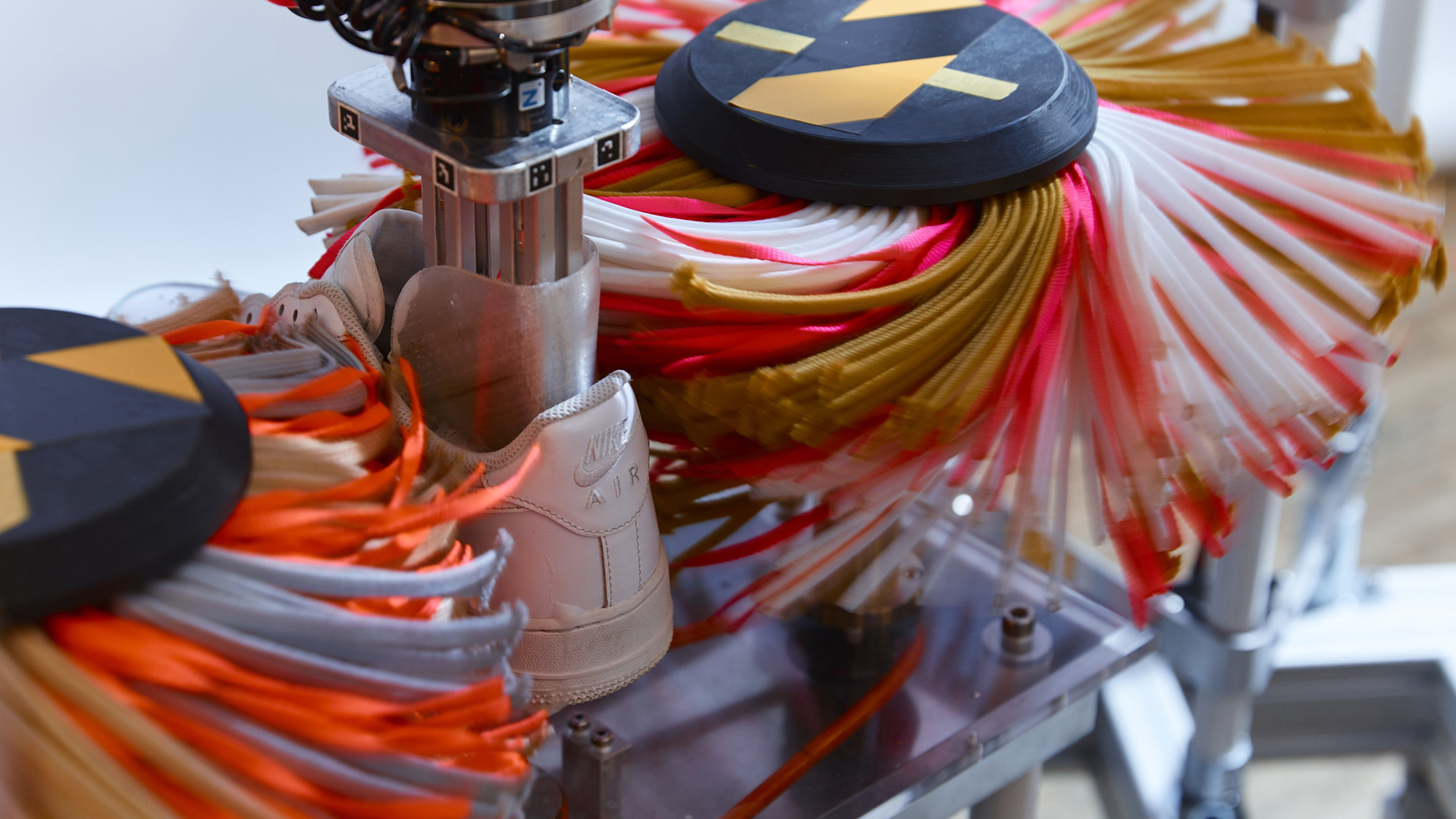Why Nike Shoe Production Remains A Challenge For Robots

Table of Contents
- The Complexity of Shoe Manufacturing
- Dexterity and Precision
- Adaptability and Variability
- Economic and Financial Barriers
- High Initial Investment Costs
- Cost-Effectiveness Compared to Human Labor
- Technological Limitations
- Artificial Intelligence and Machine Learning Limitations
- Sensor Technology Limitations
- Conclusion
The Complexity of Shoe Manufacturing
The creation of a Nike shoe is a surprisingly intricate process, far more complex than many realize. This complexity presents significant challenges for robotic automation, even with the most advanced robots currently available.
Dexterity and Precision
Robots excel at repetitive, high-precision tasks in controlled environments. However, shoe manufacturing demands a level of dexterity and precision that surpasses the capabilities of even the most sophisticated robots.
- Fine Motor Skills: Many steps in shoe production, such as precisely placing intricate pieces of leather, suede, or fabric, require fine motor skills that current robots lack. The nuances of handling varying material thicknesses and textures pose a significant hurdle.
- Material Variability: Nike uses a wide range of materials, from supple leathers to robust synthetics, each with unique properties. Adapting robotic systems to handle this variability consistently and reliably is difficult.
- Intricate Processes: Stitching, gluing, and assembling the various shoe components demand intricate movements and precise control, aspects that current robotic systems struggle to replicate flawlessly. The subtle adjustments needed for different materials and styles also present substantial challenges.
Adaptability and Variability
Nike constantly innovates, releasing new shoe designs and incorporating technological advancements into its manufacturing processes. This inherent variability significantly impacts the feasibility of widespread robotic automation.
- High Reprogramming Costs: Reprogramming robots to handle new designs is costly and time-consuming, demanding specialized expertise and significant downtime.
- Integration Challenges: Integrating robots into existing manual assembly lines is complex and may require substantial modifications to the production flow.
- Raw Material Variations: Variations in the quality and properties of raw materials also impact the performance of robotic systems, requiring constant adjustments and calibration.
Economic and Financial Barriers
While the potential benefits of robotic automation are considerable, substantial economic and financial barriers currently impede widespread adoption in Nike shoe production.
High Initial Investment Costs
Implementing advanced robotics in manufacturing demands a significant upfront investment, far beyond what many smaller manufacturers can afford.
- Robot Acquisition and Maintenance: Sophisticated robots capable of handling the complexities of shoe production are expensive to purchase and require ongoing maintenance.
- Skilled Labor: Programming, operating, and maintaining these robotic systems necessitate skilled labor, which adds to the overall cost.
- ROI Uncertainty: The return on investment (ROI) of robotic automation is uncertain, especially in a fast-changing market where new shoe designs and manufacturing methods are constantly emerging.
Cost-Effectiveness Compared to Human Labor
In certain regions, particularly those with lower labor costs, human labor remains a more cost-effective solution than robotic automation, especially for less complex tasks.
- Lower Labor Costs: The lower wages in some manufacturing hubs offset the initial investment costs of robotics.
- Incomplete Automation: It's currently not feasible to automate every aspect of shoe production, meaning human intervention will likely remain necessary.
- Robot Downtime: Robot downtime and maintenance are costly, potentially negating the advantages of automation if not carefully managed.
Technological Limitations
Despite advancements, technological limitations continue to hinder fully automated Nike shoe production.
Artificial Intelligence and Machine Learning Limitations
Current AI and ML technologies are not yet sufficiently advanced to handle the nuanced decision-making and adaptive capabilities required for diverse shoe production processes.
- Material Identification: Training robots to consistently identify and adapt to subtle variations in materials remains a considerable challenge.
- Quality Control: Implementing robust quality control systems with robots that consistently meet Nike's exacting standards is still under development.
- Vision Systems: Further improvements in AI-powered vision systems are needed for more accurate and reliable robotic navigation and manipulation.
Sensor Technology Limitations
Accurate and reliable sensors are crucial for robots to interact effectively with materials and tools during shoe production.
- Precision and Durability: Sensors need high precision and durability to withstand the rigors of the manufacturing process.
- Sensor Integration: Integrating sensors into complex robotic systems seamlessly is complex.
- Material Detection: Detecting subtle variations in material properties reliably remains a challenge for current sensor technology.
Conclusion
While robotic automation holds significant promise for the future of manufacturing, fully automating Nike shoe production remains a substantial challenge. The inherent complexity of shoe manufacturing, coupled with economic and technological hurdles, suggests that a complete robotic takeover is unlikely in the near future. However, a strategic integration of robots for specific tasks, complementing human workers' skills, may offer a more realistic approach to enhance efficiency and improve output in Robot Nike Shoe Production. Further research and development in robotics, AI, and sensor technology are crucial to overcome these obstacles and pave the way for more widespread robotic automation within the footwear industry. Investing in these advancements is key to unlocking the full potential of Robot Nike Shoe Production and revolutionizing the future of sneaker manufacturing.

 Google And Doj Return To Court Battle Over Search Monopoly Heats Up
Google And Doj Return To Court Battle Over Search Monopoly Heats Up
 1 050 V Mware Price Hike At And Ts Concerns Over Broadcoms Acquisition
1 050 V Mware Price Hike At And Ts Concerns Over Broadcoms Acquisition
 Ftc Appeals Microsoft Activision Merger Ruling
Ftc Appeals Microsoft Activision Merger Ruling
 Los Angeles Palisades Fire A List Of Celebrities Who Lost Their Properties
Los Angeles Palisades Fire A List Of Celebrities Who Lost Their Properties
 Choosing Franciss Successor Challenges And Expectations
Choosing Franciss Successor Challenges And Expectations
